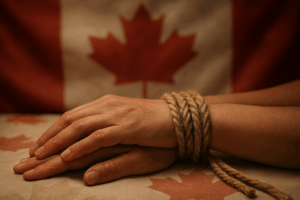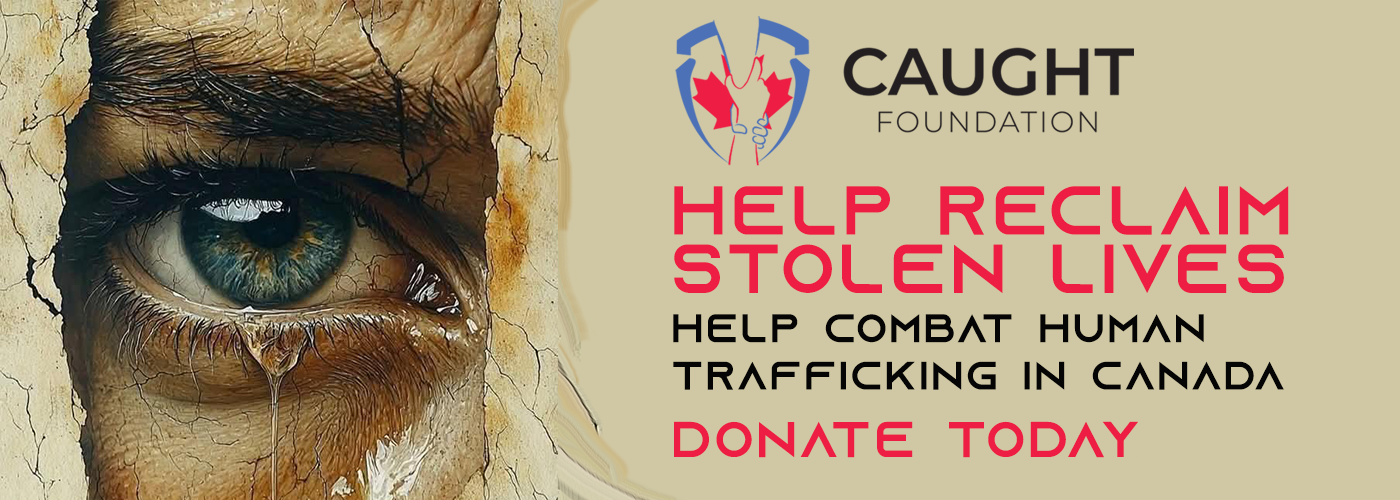Deno’s Journey—Stories of Survival, Credibility, and Collective Change
I. Introduction: Deno’s Transition
Deno once thrived in the structured world of military operations, where every sunrise brought the discipline of strategic briefings and the steady rhythm of command. Retirement in rural Ontario was meant to be a reprieve—a time for quiet mornings on his porch, the soft rustle of woodland leaves replacing the relentless pace of his former life. Yet, for Deno, the instincts of vigilance never faded. Even amid tranquility, he remained attuned to subtle signals of distress, shaped by a career that taught him to see what others often overlooked. This lingering alertness would soon pull him into a new, unexpected mission.
II. The Inciting Incident: A Mother’s Cry
One late afternoon, the calm was interrupted by a phone call. The woman on the line, her voice trembling yet firm, introduced herself as a mother seeking hope. “Is this Deno? I was given your name by a friend who trusts you. I don’t know who else to turn to,” she confided. She described urgent fears for herself and her teenage daughters and detailed the distressing absence—or even complicity—of authorities tasked with their protection.
III. Mother’s Story: Years in the Shadows
As she spoke, the mother recounted years spent in fear: grooming by someone once trusted, threats that silenced her and her daughters, and the insidious reach of a network that preyed on their vulnerability. She named alleged perpetrators—her husband, a high-ranking Mason; certain law enforcement officials; and, with striking detail, individuals in positions of power. Throughout, she expressed frustration at a system that, in her view, had ignored evidence and failed to act.
Her pain resonated in every word: “We were invisible. Every time I tried to speak up, the doors closed, or I was told I was imagining things. I just want someone to listen—someone who will believe us.” The emotional toll was profound—years of mistrust, isolation, and the constant fear that seeking help would only bring more harm. Yet, her resolve shone through: “I will do whatever it takes to protect my girls. I can’t give up.” Deno, moved by her courage and the clarity of her narrative, resolved to help where the system had fallen short.
IV. Deno’s Past and Motivation
The mother’s story dredged up memories from Deno’s own past: an early 1990s operation in Quebec, where he had uncovered evidence of a trafficking network but lacked the mandate and resources to intervene. The frustration and regret from that episode lingered for decades. Now, faced with another plea for help, Deno felt a renewed sense of purpose—an opportunity to act decisively, ensuring that his expertise would finally tip the balance for those the system had failed.
V. Researching Human Trafficking in Canada
Deno’s investigation began with late nights and volumes of research. He was reminded that human trafficking in Canada is a pervasive, multi-faceted crime. The two primary forms are sex trafficking and forced labor, both affecting Canadian citizens and newcomers alike. Indigenous women, at-risk youth, migrants, and people experiencing poverty are particularly vulnerable. Large cities and transportation corridors—Toronto, Vancouver, Montreal, and highways like the 401—serve as trafficking routes.
Statistics revealed a grim reality: thousands are trafficked each year, with many cases unreported due to fear, stigma, or distrust of authorities. Most traffickers are known to their victims—intimate partners, family members, or acquaintances—who use manipulation, coercion, and violence to maintain control.
Deno mapped trafficking hotspots, patterns, and systemic challenges. He discovered that trafficking thrives where oversight is lax and corruption seeps into institutions meant to protect.
VI. Survivor Stories: Voices of Hope
As Deno immersed himself in advocacy, he encountered a chorus of survivor voices—each with a unique journey marked by pain, resilience, and hope. Their stories became his compass, shaping his understanding and approach.
- Sierra’s Journey: Trafficked at age 14, Sierra was first approached through a social media message promising modeling work. She recalls, “He made me feel special—like I was finally seen. But soon, the promises turned to threats.” Sierra faced immense barriers: disbelief from extended family, fear of retaliation, and a sense of shame that kept her silent. Her path to recovery began when a school counselor noticed her withdrawal and connected her to a survivor-led advocacy group. “Having someone believe me—just one person—was everything,” Sierra says. Through trauma-informed counseling, legal support, and art therapy, Sierra found the strength to testify against her trafficker. Today, she volunteers at local schools, warning others about online grooming and offering hope: “If I could survive, so can you.”
- Cassandra’s Escape: After years trapped in a trafficking network, Cassandra’s turning point came when she met a former survivor at a shelter. She shares, “I thought no one could understand what I’d been through. But seeing someone who’d rebuilt her life gave me hope.” Advocacy groups provided her with legal aid to expunge charges tied to her exploitation and helped her secure safe housing. Her resilience inspired others, and she now leads workshops on recognizing trafficking tactics.
- Leah’s Healing: Trafficked as a teen by someone she knew, Leah struggled with trust and recurring trauma. Support from peer-led groups and ongoing therapy enabled her slow journey toward healing. “There were days I wanted to disappear. But the group never gave up on me. They celebrated every small victory,” Leah recalls.
- Kaitlin’s Advocacy: Kaitlin’s recovery led her from silence to activism. “Speaking out was terrifying, but I realized my story could help others.” She now trains front-line workers to spot signs of trafficking and mentors new survivors, determined to break the cycle.
- Cassandra Diamond and BridgeNorth: As a leader in survivor advocacy, Cassandra Diamond founded BridgeNorth to amplify survivor-led solutions. Her programs focus on life skills, education, and peer mentorship. “Only survivors can truly understand what it takes to heal—and to change the system,” she emphasizes.
VII. Law Enforcement and Systemic Responses
Deno’s research showed that Canada’s response to human trafficking is evolving. He studied the introduction of trauma-informed policing and national strategies emphasizing prevention, protection, and prosecution. The Canadian Human Trafficking Hotline now offers confidential support and connections to law enforcement and service providers. Nonetheless, challenges persist: traffickers infiltrating support systems, uneven training, limited resources, and institutional resistance all contribute to ongoing distrust. Deno remains transparent about these realities, advocating open dialogue and genuine reform.
VIII. Deno’s Advocacy: Practical Steps
Deno transitioned from research to hands-on advocacy, leveraging his experience to forge collaborations and drive tangible results. Each step was grounded in real-world impact, demonstrating the power of collective action.
- Build Local Partnerships: Partner with women’s shelters (including serving Indigenous communities), help establish a regular support group for survivors. Attend local forums enabling resource sharing and foster trust.
- Facilitate Access to Services: Work with legal clinics and social workers to create streamlined referral processes for trauma therapy and emergency housing.
- Raise Awareness and Educate: Organize workshops in local high schools, using survivor testimony to educate students and teachers.
- Advocate for Policy Change: Support survivor-led lobbying efforts, contributing data and testimony to a campaign that secures increased provincial funding for victim services.
- Encourage Survivor Leadership: Mentor survivors interested in advocacy.
- Promote Safe Reporting Channels: Partner with local police chiefs, help implement anonymous tip lines and publicize the Canadian Human Trafficking Hotline and other Foundation Hotlines.
- Support Financial and Legal Recovery: Collaborate with legal aid societies.
- Foster Ongoing Healing and Empowerment: Connect with art therapists and peer groups, to create safe spaces for creativity and reflection.
- Monitor and Evaluate Impact: Create regular feedback sessions with survivors led to improvements in outreach and support.
Raising awareness became a cornerstone of his advocacy. Deno spoke at community events, sharing stories that humanized the issue and calling for vigilance. He championed survivor-led recovery, ensuring that programming respected the dignity and autonomy of those it aimed to serve.
IX. Integrating the Caught Foundation
Deno’s advocacy expanded as he discovered the Caught Foundation—a new and rising agency in Canada dedicated to reclaiming stolen lives and combating human trafficking. Founded by former law enforcement and intelligence professionals, the foundation offered investigative resources, caregiver education, and community outreach. Deno partnered with the Caught Foundation to connect survivors with specialized support, promote safe reporting channels, and strengthen local networks. Together, they worked to empower communities, support law enforcement, and drive systemic change.
X. Bridging Gaps AHT: Survivor-Led Healing
Deno’s advocacy included connecting groups like Bridging Gaps AHT (Anti-Human Trafficking)—a survivor-led organization committed to holistic healing and long-term recovery for those affected by human trafficking. By partnering with Bridging Gaps AHT, survivors have access to trauma-informed practitioners, organized community awareness events, and facilitated training for local organizations. Together, they empowered survivors to become leaders and advocates, fostering resilience and hope across communities.
XI. Whisper Alliance Inc: Survivor-Led Healing
Deno’s advocacy journey continued to evolve as he formed a partnership with Whisper Alliance Inc, Canada, an organization committed to providing confidential support and resources to survivors of human trafficking. Through Whisper Canada’s secure online platform, it helped survivors access critical information, counseling, and legal assistance in a safe and discreet manner. This collaboration not only extended the network of support but also amplified outreach efforts, making survivor-centric resources more accessible across diverse communities.
By integrating Whisper Canada’s digital tools with his existing partnerships, Deno ensured that survivors could connect with help on their own terms. The alliance fostered innovation in survivor care, leveraging technology to break down barriers to support and encourage empowerment through privacy and autonomy.
XII. Conclusion: Empowerment and Systemic Change
Deno’s transformation from retired officer to leading advocate illustrates the power of listening, compassion, and expertise. By amplifying survivor voices, challenging complacency, and forging meaningful partnerships, he has helped open new pathways for justice and healing. The road ahead requires ongoing transparency, trust, and collaboration. As more survivors, families, advocates, and officials join the cause, hope grows—each voice adding strength to a movement determined to end human trafficking. Together, they are building a future where no one is left unheard or unprotected.

Connect with us at https://social.thealliancepress.com/ and help us grow the community. Our platform is safe, secure, private and your data is yours. We the people run, maintain and are building this service. No government, corporation or three letter agency influence or clandestine operations.


